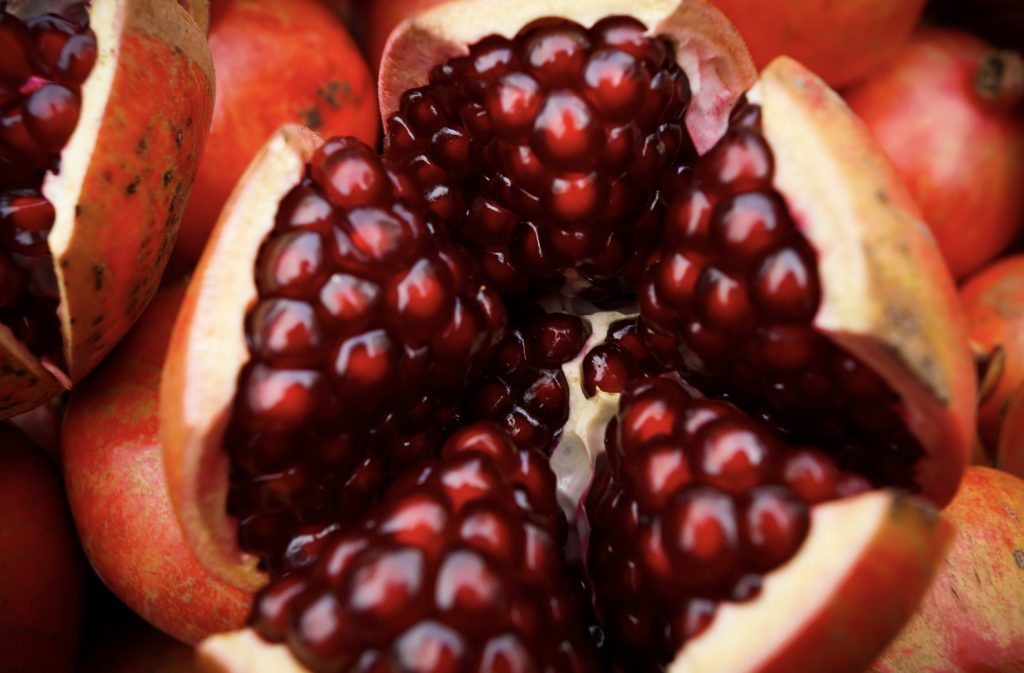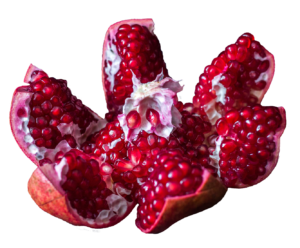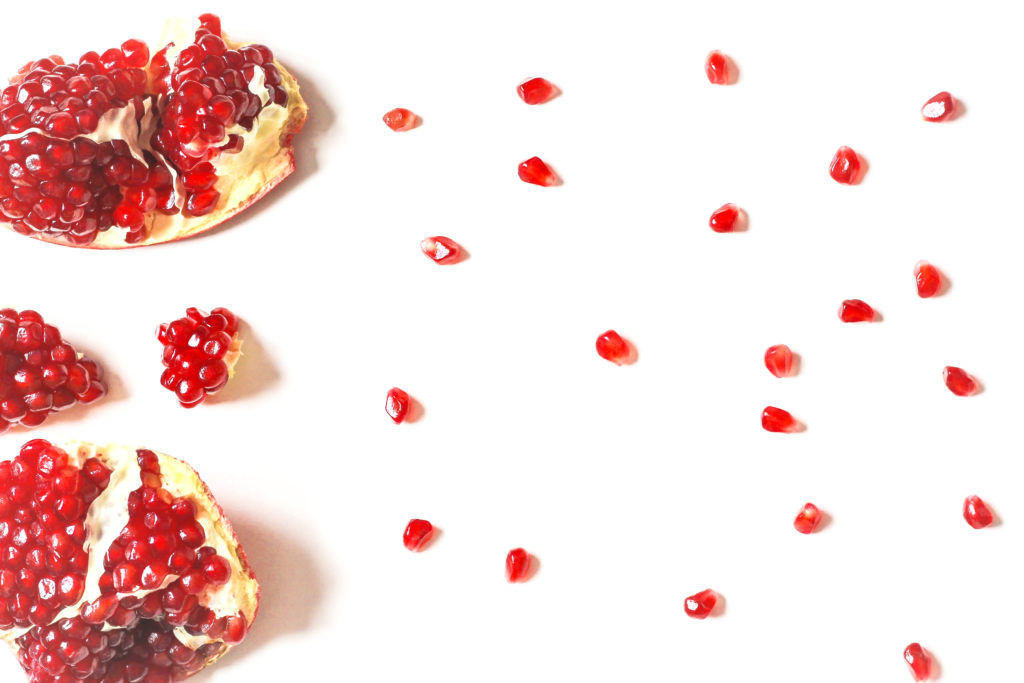How Pomegranate Helps Skin & Hair
Pomegranate is more than a tasty treat. Those juicy, jewel-like seeds are arils. Arils are packed with antioxidants, minerals, vitamins A, C, K and E plus folic acid. Pomegranates contains three times the antioxidants of wine or green tea. [1] Arils also hold a beautiful juicy lip stain of natural color.
Pomegranates is the “hostess with the mostess” polyphenol and antioxidant wise. It contains the most powerful type of antioxidant, a tannin called punicalagins. They actually help the body set up something of an antioxidant recycling system that clears toxins and renews cells. This increased microcirculation and cell renewal reduces new wrinkles and improves skin texture.
Topical skin Application
Rich in Vitamin C, pomegranate reduces skin roughness when regularly applied topically, The high water content is hydrating.
The polyphenols are antioxidants that protect skin cells from oxidative damage. Other antioxidants reduce inflammation ranging from puffiness to acne snd tackle oxidative damage like dark spots and sun damage.
Pomegranate prompts the skin cells to work overtime to produce collagen.
Omega 5 fatty acid reduces skin inflammation and aids in skin repair for scarring, discoloration and acne marks.
Where does one find Pomegranate is skincare?
Pomegranate Sterols is a safe, natural pomegranate based skin care ingredient. It is made by pressing the arils to extract the juice, which is fractionated. It increases skin barrier formation and improves skin hydration. Testing shows Pomegranate Sterols holds double its weight in water.
Hair
Pomegranate seeds contain punicic acid. Punicic acid improves blood flow to the scalp and stimulates circulation. Pomegranate oil makes for a lovely scalp and hair massage oil. It smoothes frizz and conditions hair.
References
- Antioxidant Activity of Pomegranate Juice and Its Relationship with Phenolic Composition and Processing Mara I. Gil , Francisco A. Tomas-Barbern, , Betty Hess-Pierce, Deirdre M. Holcroft, and, and Adel A. Kader*,Journal of Agricultural and Food Chemistry 2000 48 (10)


